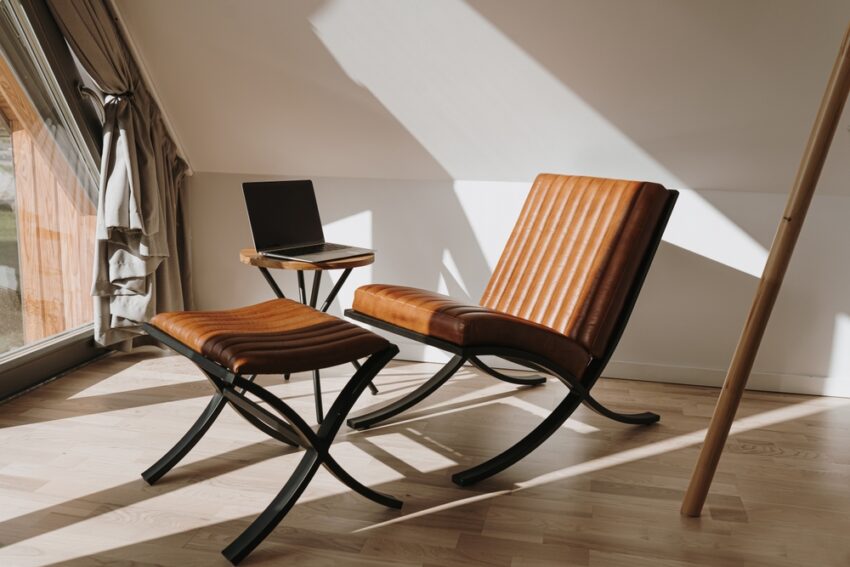The global furniture design industry may not seem the most obvious place to look for business lessons.
But for decades, Italy's top design houses (B&B Italia, Cassina, Poliform, Minotti) have quietly mastered something that most companies still struggle to achieve: long-term profitability built on craftsmanship, innovation, and emotional value.
These brands operate in a highly competitive global market, yet they rarely discount, rarely overproduce and consistently command premium margins. Their success depends not on scale or speed, but on depth, accuracy and trust. That's why you'll never see an Edra sofa losing its value over time. And this is exactly what is missing today in many areas, from technology to consumer goods. Here's what every entrepreneur and executive can learn from the business logic behind luxury design furniture.
Produce Less, But Better: The Power of Made-to-Order
In the age of mass production, the luxury design sector has done the unthinkable: It has slowed down.
Instead of filling warehouses with inventory, companies like Minotti and Flexform work on a made-to-order model, with each piece produced only after a customer places an order.
This strategy does more than just control costs. This aligns perfectly with today's consumer values: personalization, sustainability and exclusivity. Customers don't just buy the sofa, they also take commission on it. Every dimension, fabric and finish suits their space and lifestyle.
For the broader business world driven by efficiency, this approach offers an important insight: optimization is not inefficiency, it is intimacy. Lower production, but with greater accuracy, builds deeper loyalty and keeps operations lean without cheapening the brand.
Innovate at human speed
In design, innovation doesn't mean chasing trends or releasing new models every quarter. It means growing with purpose. Brands like Poltrona Frau and Porada have mastered what could be called “human-paced innovation,” a balance between cutting-edge technology and timeless craftsmanship.
Their R&D department experiments with advanced foams, recyclable composites, and precision-molded metals. Yet every technical step is guided by the hand of an artisan. Machines replicate; Humans define the soul.
This balance (craft and code, intuition and data) is a lesson for all industries working on AI and automation. Progress should not erase the human touch; It should be increased. The future belongs to companies that combine innovation with identity, not those that abandon one for the other.
Sell feelings, not things
Luxury furniture brands know that their real product isn't a chair, it's a feeling. Designers like Patricia Urquiola and Antonio Citterio don't just sketch furniture; They choreograph experiences. When a customer sits on a Poltrona Frau chair or runs his hand over a Cassina table, he is not evaluating utility; They are feeling presence, comfort and pride.
From a business perspective, this is the art of emotional branding. A brand that evokes emotions creates resilience. It can withstand market fluctuations because it holds not only market share but also psychological position.
Whether you sell technology, fashion, or finance, the principle remains: Emotion is the most underutilized competitive advantage. Products that connect emotionally command loyalty and premium pricing.
Invest in timeless design, not viral moments
While most industries chase short-term visibility, design furniture brands think in decades. Pieces like the LC4 chaise longue by Le Corbusier for Cassina or the Camelonda sofa by Mario Bellini for B&B Italia were launched 40 years ago, and yet, they continue to sell, trend, and inspire new generations.
Their longevity stems from a core belief: innovation should solve real human needs, not seasonal fads. Professional translation? Prioritize meaningful differentiation over continuous innovation. In a market addicted to the “next big thing,” timeless design is the ultimate disruption.
Build a culture of collaboration
Italian design brands rarely work in isolation. They thrive on creative partnerships with architects, engineers and artists. Cassina's collaboration with the archives of Philippe Starck, Patricia Urquiola and Gio Ponti has fostered not only new collections but a constant dialogue between heritage and experimentation.
For companies in any industry, this kind of collaboration isn't just marketing, it's innovation insurance. Inviting diverse creative voices avoids stagnation, expands perspective and keeps a brand culturally relevant. As a business model, co-creation combines the confidence of heritage with the freshness of new ideas, a strategy that is far more sustainable than acquisition or imitation.
Sustainability as a strategy, not a slogan
While “eco-friendly” has become a buzzword, luxury furniture brands incorporate sustainability at the core of their process. Poliform, Riva1920, and Arper invest in renewable materials, circular production systems, and local sourcing, not because it looks good on paper, but because their customers demand integrity.
In an area where materials are tactile and visible, the fixture cannot be hidden; It must be real. The lesson here is universal: In the age of transparency, greenwashing isn't just unethical; This is bad business. Sustainability must not only reside in social feeds, but also in the supply chain.
Design for legacy
The best design brands don't sell products, they create legacies. When B&B Italia launches a sofa, it is imagined to outlive its owner. The goal is durability, not replacement. Every CEO should consider that mindset (designing for continuity rather than obsolescence).
Tech companies released updates; Luxury designed homes create legacies. And in an economy increasingly defined by disposability, the ability to build something that can last becomes an act of leadership.
beauty business
At first glance, luxury furniture may seem an unlikely source of business knowledge. But behind the soft textures and sculptural silhouettes lies a set of principles that drive long-term success: intentional production, emotional storytelling, human-centered innovation, and respect for time. In short, these brands remind us that growth doesn't always mean fast. Sometimes it means sophistication. And in a world obsessed with moving fast, perhaps the smartest strategy is to move gracefully.










